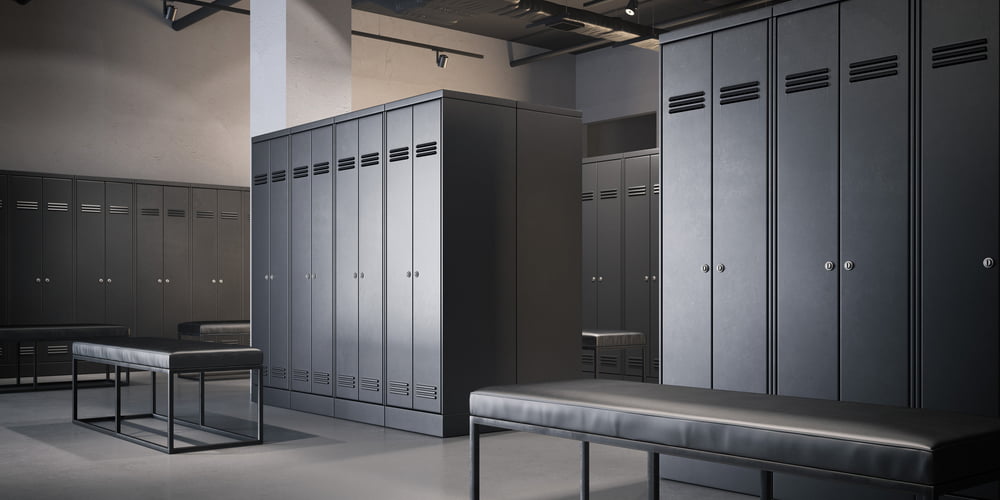What you need to know about the changes to itemized deductions
The largest change to individual tax compliance resulting from the Tax Cuts and Jobs Act affects the calculation of various itemized deductions. Clients and friends have expressed confusion and even repeated some common misconceptions about the changes. CPAs all over are fielding questions in the office, out at dinner and in gym locker rooms. So we thought we’d take a moment to explain it in a fun and relevant way: using a locker analogy!
Itemizing vs. Claiming the Standard Deduction
As a qualifying taxpayer, you can claim the standard deduction on your tax return. In 2017, married taxpayers can claim a $12,700 standard deduction and single taxpayers can claim $6,350. In 2018, these numbers jump to $24,000 for married filers and $12,000 for single filers as a result of the new tax legislation.
Even with the increase in the standard deduction, some taxpayers will still benefit from itemizing. The Internal Revenue Code allows certain expenses, referred to as itemized deductions, to offset taxable income. Every itemized deduction has its own set of rules and, sometimes, limitations. In our analogy, each deduction category has its own locker, or subtotal. Once all the potential deductions are calculated, everything in the locker room is summed up. If the total exceeds the standard deduction, it is beneficial to itemize. If not, it’s advantageous to simply claim the standard deduction.
So What Goes in the Lockers? And What Has Changed with the New Tax Law?
Locker #1 – Medical Expenses
Medical expenses have been deductible to the extent they exceeded 10% of your Adjusted Gross Income (“AGI”). For several years, if you were a taxpayer 65 or older, there was an exception that allowed you to only exceed 7.5% of your AGI. That benefit expired after 2016 tax returns so everyone was set to have to clear that 10% threshold beginning with 2017 tax filings.
What Changed – Taxpayers got a temporary break. All taxpayers must only clear the 7.5% of AGI hurdle in 2017 and 2018. Beginning in 2019, the threshold bumps up to 10% for everyone.
Locker #2 – Taxes Paid
This has been a hot topic recently! Here you can deduct (previously and in 2017) state and local income taxes (or general sales tax as a substitute), real estate taxes, personal property taxes and other qualifying taxes.
What Changed – This is the last year for claiming all taxes paid. Beginning in 2018, this deduction will be limited to a total of $10,000 (for income, real estate and personal property combined).
Locker #3 – Interest Paid
This is where you can deduct home mortgage interest, points paid, mortgage insurance premiums (subject to income limitation) and investment interest. As a homeowner, you can deduct (previously and in 2017) home mortgage interest on up to $1,000,000 of acquisition indebtedness as long as the home was purchased and financed before December 15, 2017. You can also claim the interest expense on up to $100,000 of home equity debt.
What Changed – For homes purchased after December 15, 2017 (with few exceptions), interest may only be deducted on the first $750,000 of acquisition debt beginning on the 2018 tax return. Older loans are grandfathered at $1 million, as are refinances where no additional money is taken out. As of 2018, all home equity loan interest is nondeductible, no matter when you took out the loan.
Locker #4 – Gifts to Charity
You can deduct gifts to qualifying charitable organizations. Different limitations exist against AGI depending on the type of contribution made and the recipient organization. The majority of donations are cash and made to public charities; these may be deducted up to 50% of your current year AGI (for 2017 and prior years).
What Changed – Beginning in 2018, cash gifts to public charities may offset up to 60% of your AGI. Additionally, the new law made gifts given to colleges and universities in exchange for the right to purchase athletic seats are no longer deductible.
Locker #5 – Casualty Losses
Casualty losses have some very specific rules. If you had a big loss in 2017 or a prior year so large that, even after insurance payouts, the loss exceeded 10% of your AGI, you could benefit from claiming a casualty loss.
What Changed – These losses will only be allowed for taxpayers who experienced the loss as a result of a federally declared disaster.
Locker #6 – Miscellaneous Itemized Deductions
This deduction was allowed for qualifying expenses that exceeded 2% of your AGI for the taxable year. Eligible items included: tax preparation fees, unreimbursed employee expenses, investment fees, safe deposit box fees, uniforms, some legal fees, etc.
What Changed – As of 2018, these expenses will no longer be deductible for any taxpayer.
As you can see, every category was touched by the Tax Cuts and Jobs Act. You may be one of the many taxpayers who will see considerable changes in their itemized deductions from 2017 to 2018. Even taxpayers with a long history of itemizing may benefit from claiming the standard deduction beginning in 2018. If you have questions, we’re here to help you determine how the new law will affect your individual circumstances.





